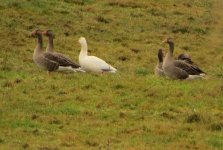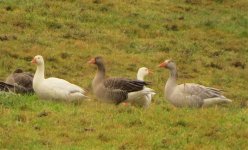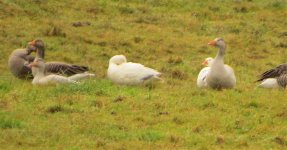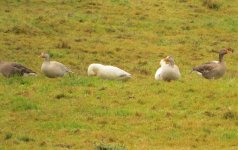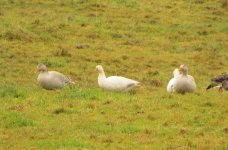While carrying out a WeBS count todat I came across two white and two greyish coloured geese in a group of some 250 Greylags at Lay Moss in the Scottish Borders (NT5230). At first I dismissed them as domestic birds and then noted that the marking on the two white were almost identical as were those on the greyish coloured birds. Have they just joined the gaggle or should I have shown more interest in them?
Martin
Martin




